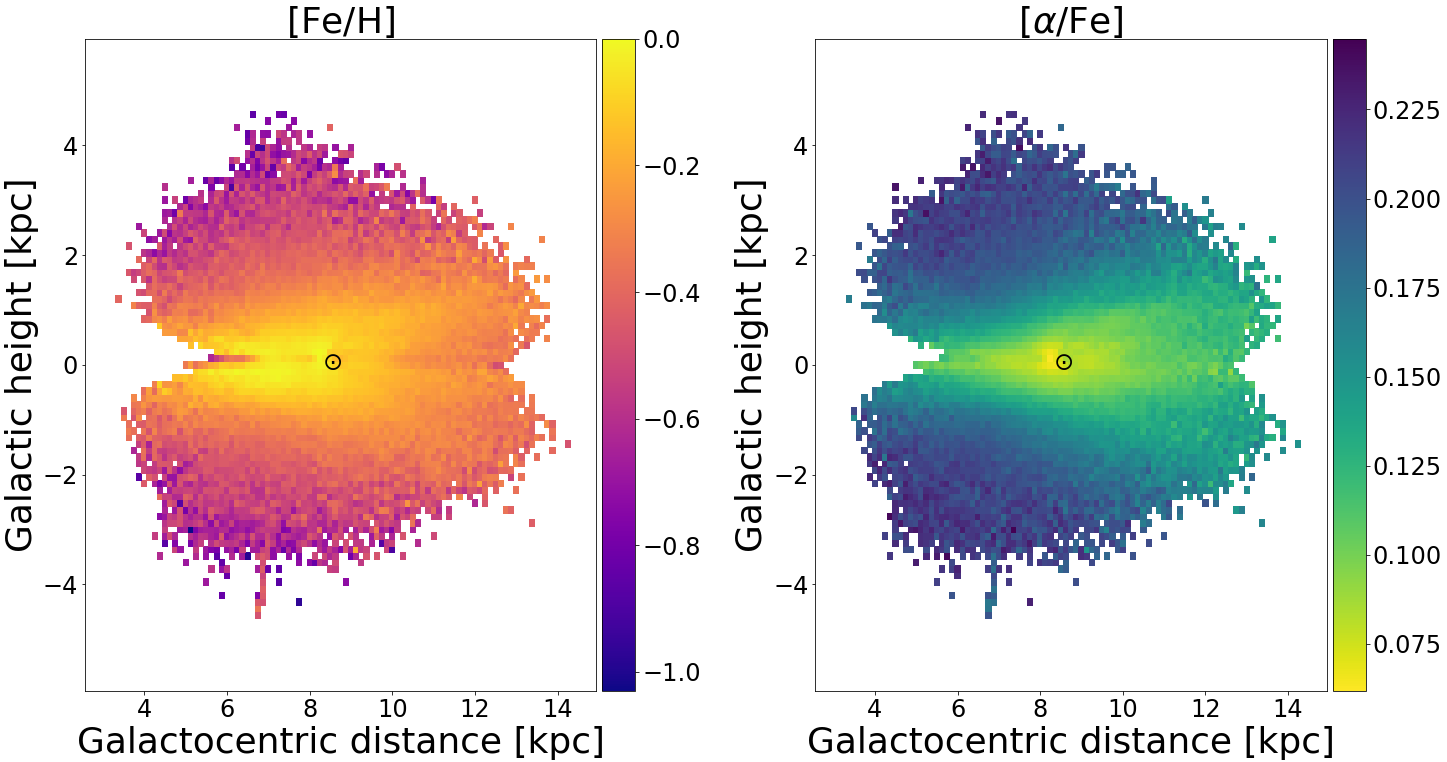Start
Research
Publications
Statistics playground
Teaching
CV
Contact
There are numerous ground-based spectroscopic surveys (e.g. RAVE, GALAH, SDSS, LAMOST) that cover different areas of the sky and use different observational techniques and analysis methods to estimate stellar parameters. Unfortunately, these surveys have only little mutual overlap and their resulting parameters can exhibit systematic differences (e.g. different temperature scales). ESA's Gaia satellite provides low-resolution BP/RP spectro-photometry (120 pixels over whole optical wavelength range) for all sources over the entire sky. This sample thus fully overlaps with all ground-based spectroscopic surveys. This can be used to bridge the gap between the different surveys, e.g. to generalise and compare their estimates.
Method and data
We took parameter estimates from the GALAH DR2 survey and the Gaia BP/RP spectra for a set of ~200,000 stars. We then trained a machine-learning algorithm (extremely randomised trees) to estimate the GALAH parameters from the Gaia BP/RP spectra. Our focus was on GALAH's abundance estimates, which usually require high-resolution spectroscopy (resolution ~30,000 in the case of GALAH). Using cross-validation, we first confirmed that the machine-learning algorithm can reproduce the GALAH DR2 parameters from the Gaia BP/RP spectra within reasonable limits. The trained machine-learning algorithm was then applied to 1 million BP/RP spectra of other sources for which we knew from Gaia that they are red-giant stars but which were not observed by GALAH.
 Figure 1. Gaia low-resolution BP/RP spectra of 1 million giant stars within 4 kpc of the Sun reveal the global distributions of different metals which encode the formation history of the Milky Way. The colour coding shows the stars’ iron content (left) and the alpha-to-iron ratio (right), a compositional property of stars that allows astronomers to tell apart different stellar populations. The Galactic disk is mostly metal-rich and α-poor, while the regions above and below the Galactic midplane become progressively more metal-poor and α-rich. Image created by Alvin Gavel, Andreas Korn, Rene Andrae and Morgan Fouesneau.
Figure 1. Gaia low-resolution BP/RP spectra of 1 million giant stars within 4 kpc of the Sun reveal the global distributions of different metals which encode the formation history of the Milky Way. The colour coding shows the stars’ iron content (left) and the alpha-to-iron ratio (right), a compositional property of stars that allows astronomers to tell apart different stellar populations. The Galactic disk is mostly metal-rich and α-poor, while the regions above and below the Galactic midplane become progressively more metal-poor and α-rich. Image created by Alvin Gavel, Andreas Korn, Rene Andrae and Morgan Fouesneau.
ResultsThe resulting metalicity and abundance estimates for 1 million red-giant stars are shown in Fig. 1. They exhibit the expected dependence on Galactic coordinates. More importantly, this exercise demonstrates that labels such as abundance estimates, which usually are very costly to acquire, can be generalised from a single survey (GALAH in this case) to whole sky coverage using Gaia's BP/RP spectra. This work was published as a Gaia Image of the Week in March 2020. The low-resolution BP/RP spectra will be published in Gaia DR3 (first half 2022).